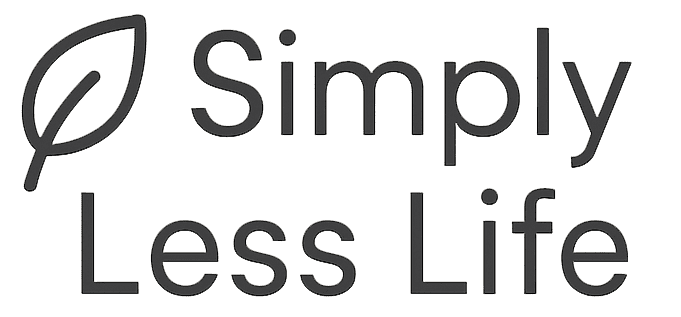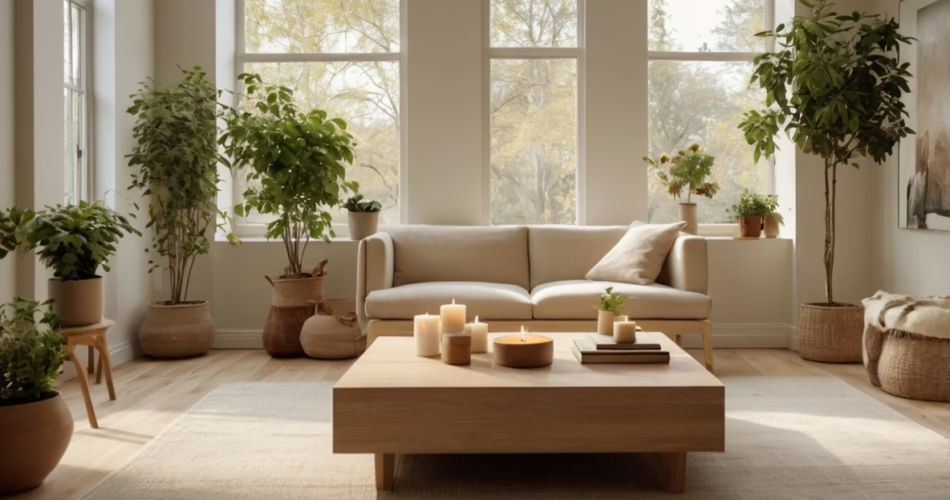Minimalist Living: The Turning Point That Sparked It All
For years, life felt like a constant race against clutter—both in my home and in my mind. Every drawer overflowed, every weekend vanished into cleaning, organizing, and buying more. At first, I thought this was normal. Everyone I knew seemed to be juggling more stuff, more appointments, more expectations. But deep down, I was drowning. Then one ordinary morning, I stood in my living room, surrounded by things I didn’t need and memories I wasn’t even attached to—and I just felt… empty. That was the turning point. I knew something had to change. That’s when I discovered minimalist living—not through a fancy Pinterest board or a sleek influencer video, but through a quiet desperation for peace.
I didn’t throw everything out at once. Instead, I started with one drawer, one surface, one honest conversation with myself about what really mattered. The deeper I leaned into this lifestyle, the more I realized that minimalist living wasn’t about depriving myself—it was about reclaiming my time, my space, and ultimately, my life. Letting go became a practice in healing. With each box I packed up for donation, a small weight lifted. It wasn’t just about things; it was about what those things represented. And slowly, a different kind of abundance began to grow.
Decluttering Isn’t Just Physical—It’s Deeply Emotional
When I first started decluttering, I thought I was just getting rid of junk. But I quickly realized that every item carried more than dust—it carried emotion. That sweater I never wore reminded me of money wasted. The drawer full of expired skincare products was a silent testament to my past insecurities. Even sentimental items became emotional landmines. What I expected to be a quick cleanup turned into an unexpected emotional journey.
Minimalist living forced me to face the stories I had attached to my possessions. I found myself holding on to things not because I loved them, but because they represented who I thought I should be. Letting go wasn’t just about creating space in my home—it was about making peace with the past and who I used to be. The process brought moments of grief, but also incredible relief. Slowly, the space around me began to reflect the clarity I was starting to feel within. Fewer distractions meant fewer excuses to avoid what mattered. The emptiness I feared turned out to be a gift—space to breathe, to feel, to grow.
Discovering Freedom Through Fewer Choices
Before embracing minimalist living, I didn’t realize how exhausting everyday decisions had become. Mornings started with a closet full of clothes and nothing to wear. My phone buzzed with endless notifications, and my to-do list felt like it was written by someone else. Every little choice—what to wear, what to cook, what to scroll—chipped away at my energy. I was always tired, not because of how much I did, but because of how many choices I had to make.
Minimalism changed that. By narrowing down what I owned and simplifying what I used, I created a life that runs on autopilot in the best way. My wardrobe became a small collection of clothes I actually love wearing. My kitchen held only the tools I truly used. Even my digital life got a cleanse—I unsubscribed, unfollowed, and deleted anything that didn’t serve a real purpose. With fewer choices came more clarity, and with clarity came peace. I no longer waste time second-guessing or wading through clutter. Instead, I focus on what matters and move through my day with ease. Minimalism didn’t just free up space; it freed up my mind.
How My Relationships Changed When I Owned Less
When I began my journey into minimalist living, I expected changes in my home, schedule, and finances. What I didn’t expect was how deeply it would affect my relationships. With fewer possessions to maintain and less mental clutter to distract me, I became more present. I noticed that conversations with loved ones felt richer, meals were more intentional, and time spent together became less about entertainment and more about connection.
I also realized how much of my previous social life was tied to consumption. Going out to shop, giving and receiving unnecessary gifts, or bonding over shared frustrations about stuff—it was all part of the old rhythm. But minimalism gently shifted my values. Instead of focusing on things, I started valuing presence over presents. I began creating moments that mattered, like shared walks, home-cooked dinners, and long phone calls. Some relationships deepened, while others quietly faded. And that was okay. Minimalist living helped me see which connections were built on shared values rather than shared habits. The space I created in my life allowed space for more meaningful relationships to grow.
Financial Peace Through Minimalist Living
Before adopting minimalist living, I didn’t fully realize how much my spending was driven by emotion, habit, and marketing. Sales emails tempted me daily. Target runs turned into cartfuls of things I didn’t plan to buy. My finances felt like a fog—money came in, but it disappeared just as fast. I wasn’t broke, but I was always behind. Then, as I started decluttering, I saw how many of my purchases had brought only momentary satisfaction and lasting clutter.
Minimalism gave me a new lens. I began questioning every expense: “Do I really need this?” “Will this add lasting value to my life?” Over time, my spending shifted. I stopped chasing trends and started saving intentionally. I paid off lingering debts and created breathing room in my budget. It wasn’t about being cheap—it was about being conscious. I still enjoy life, but now I invest in experiences over stuff: travel, meaningful gifts, and quality time. With fewer financial obligations and more clarity around my needs, I found a peace that no purchase ever gave me. Minimalist living didn’t just clean up my space—it transformed my financial life from stressful to stable.
What I Gained by Giving Things Up
Letting go of so many possessions felt scary at first. I thought I’d miss the comfort of my “just in case” items or regret saying goodbye to sentimental things. But what surprised me most about minimalist living was how much I gained by giving up. As the clutter disappeared, something else took its place—clarity, lightness, and a renewed sense of self. Suddenly, my time was my own again. I wasn’t spending weekends organizing or shopping—I was resting, reading, or actually enjoying time with the people I care about.
More than time, I gained perspective. I began to notice beauty in small things: a quiet morning, a clear desk, an unhurried walk. I found myself drawn to purpose, not possessions. I rediscovered passions I had shelved for years—writing, photography, spiritual reflection—because now I had space for them. Minimalism gave me the courage to redefine success on my own terms. I no longer measured life by what I owned, but by how I felt living it. What I gave up were distractions. What I gained was a life filled with intention, peace, and joy.
Everyday Minimalism: Habits That Keep Life Simple
The beauty of minimalist living is that it doesn’t end after one big declutter—it becomes a rhythm. Once I cleared the excess, I needed to build habits that would keep my life from sliding back into chaos. One of the first routines I adopted was the “one in, one out” rule. Every time I brought something new home, I made sure to let go of something else. It kept my space balanced and helped me stay mindful of new purchases.
Another habit that shaped my daily life was intentional pauses. I now schedule quiet moments in the morning to reflect, plan, and simply breathe. I review my digital space weekly—unsubscribing, deleting, and reorganizing so my mind stays as clear as my home. Even my meals became simpler and more nourishing, with fewer ingredients but more thought behind them. I’ve learned to say no more often—to invitations, to trends, to anything that doesn’t align with what I truly value. These small, steady habits help me live with less and love it. Minimalist living isn’t just about what’s missing—it’s about what’s finally able to stay.
The Truth About Minimalist Living—It’s Not Always Easy, But It’s Worth It
There’s a common misconception that minimalist living is all about white walls, capsule wardrobes, and perfect organization. But the truth is, it’s a deeply personal journey—and it’s not always easy. Some days, I miss the rush of impulse shopping or the comfort of holding on to “just in case” items. And sometimes, people around me don’t understand why I’ve chosen this path. They see it as extreme or even boring. But what they don’t see is the freedom it’s given me on the inside.
Minimalism has taught me to sit with discomfort, to resist the noise of “more,” and to trust that I already have enough. It’s not a destination; it’s a daily decision to live with intention. And while it isn’t always convenient, it’s always worth it. Because every time I walk into my uncluttered home, wake up without mental fog, or spend a quiet Sunday doing absolutely nothing—I remember why I chose this life. Minimalist living isn’t a trend. For me, it’s a return to peace.

